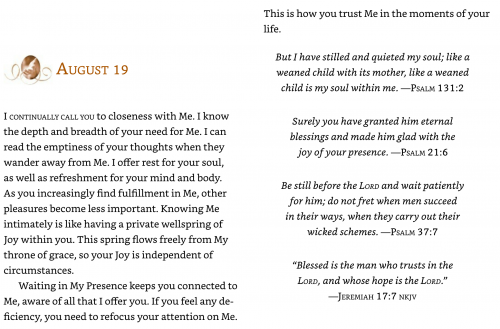Order, Disorder, Reorder:
Part Two

A
Disruption of the Spirit
Wednesday, August 19, 2020
My friend and CAC colleague Brian McLaren has spent years imagining “a new kind of Christianity” that invites people into a deepening commitment to love of God, neighbor, and self. Such a movement for the common good is surely disruptive or “disordering” to our status quo, just as Jesus disrupted the status quo in his own day.
Jesus was introducing what, in today’s parlance, might be called a disruptive technology. Where sustaining technologies stimulate incremental improvements, like, say, going from a rotary phone to a touch-tone or keypad phone, or even from a landline to a wireless phone, a disruptive technology displaces established assumptions, as in, say, combining a phone, a camera, a computer, a music library and player, a GPS device, and a mobile Internet portal. The old status quo is disrupted, the game changes, and old technologies become irrelevant.
[In] John’s Gospel, Jesus continues to use the imagery of disruption (John 3–4). First, he tells a man that in spite of all his learning, in spite of all his status, he needs to go back and start over, to be born again—perhaps the most apt image for disruption ever. Then he tells a woman that the location of worship doesn’t matter at all—which in their day meant that temples were irrelevant. What matters, Jesus says, is the attitude (or spirit) and authenticity (or truth) of the worshipper. Jesus was calling for a radical disruption in his religion, a great spiritual migration, and a similar disruption and migration are needed no less today in the religion that names itself after him. . . .
A later New Testament writer repeated and expanded upon the disruption and migration Jesus was calling for (1 Peter 2:5). The way of life centered in the Temple must be disrupted because God wanted to dwell not in buildings of bricks or stones cemented together by mortar, but rather in human beings—living stones, he called them—cemented together by mutual love, honor, and respect. . . .
This disruptive revolution, this liberation, this great spiritual migration begins with each of us presenting ourselves, with all of our doubts and imperfections, all of our failures, fears, and flaws, to the Spirit, our legs as pillars, our bodies as temples. . . . You. Me. Everyone. No exceptions.
“The moving ever shall stay,” [twelfth-century Hindu mystic and poet] Basava said. [1] Those words contradict so much of our inherited religious sensibility. “Stay the same. Don’t move. Hold on. Survival depends on resistance to change,” we were told again and again. “Foment change. Keep moving. Evolve. Survival depends on mobility,” the Spirit persistently says. . . .
If you want to see the future of Christianity as a great spiritual migration, don’t look at a church building. Go look in the mirror and look at your neighbor. God’s message of love is sent into the world in human envelopes. If you want to see a great spiritual migration begin, then let it start right in your body. Let your life be a foothold of liberation.
